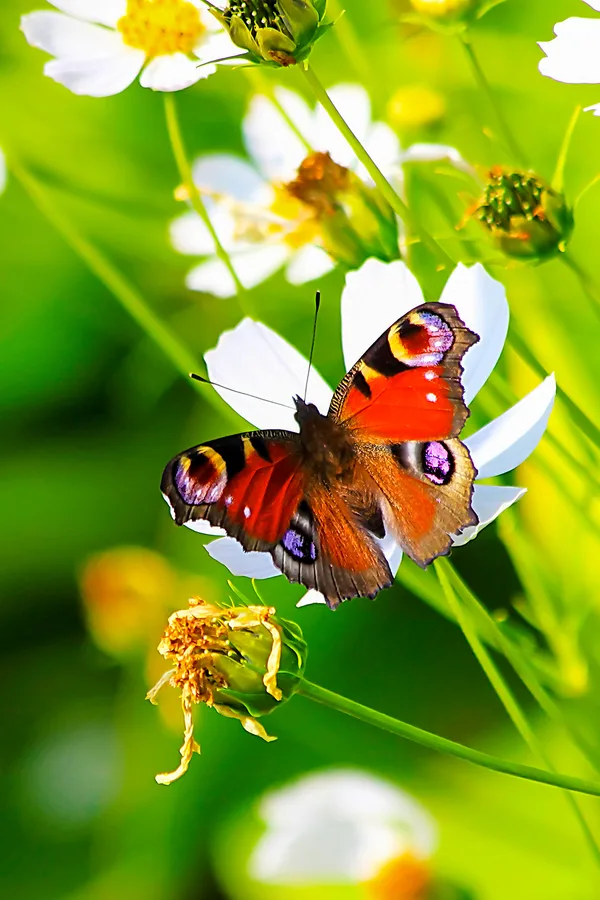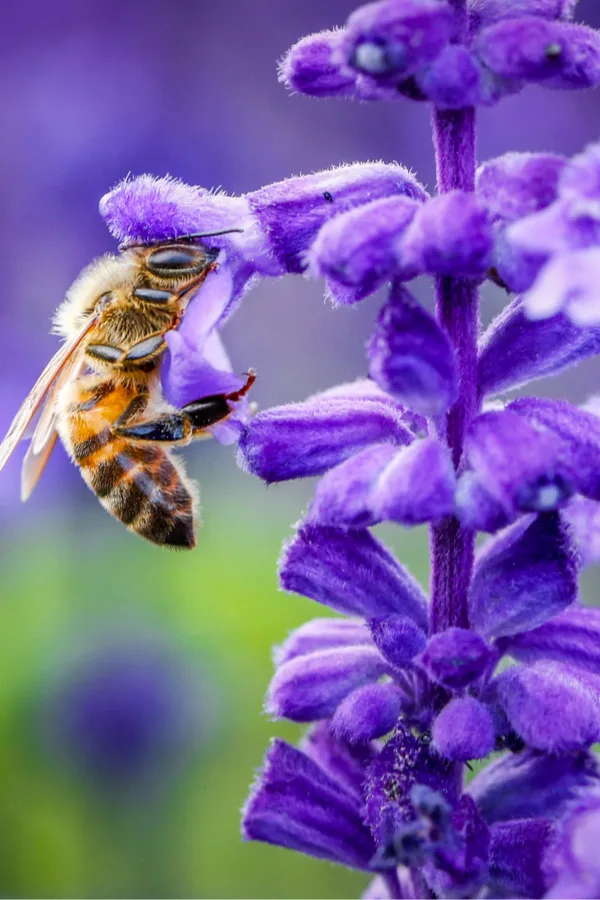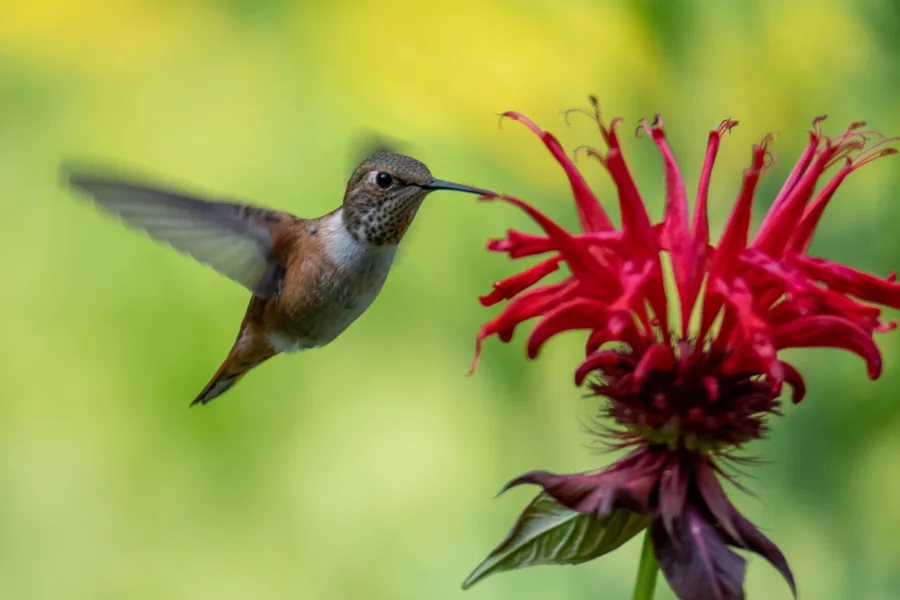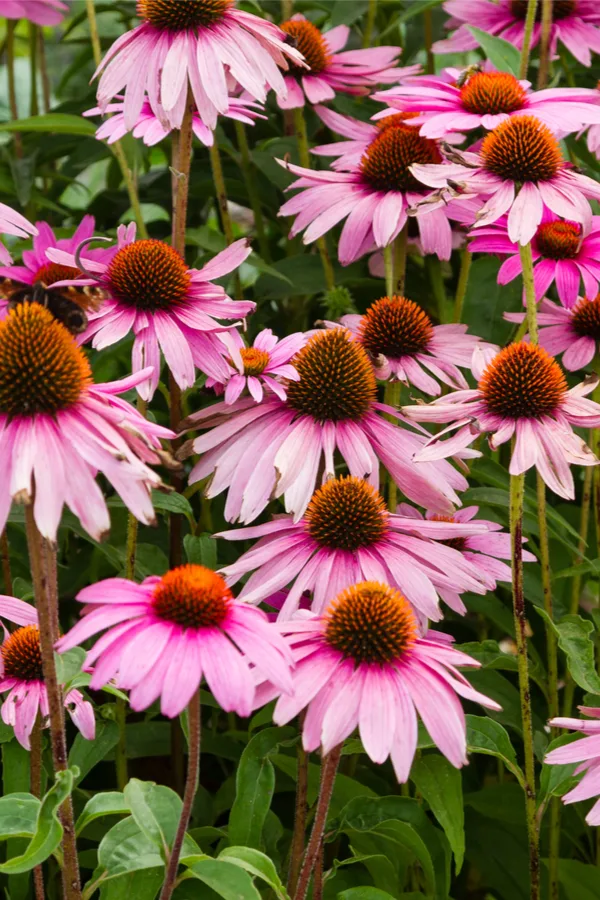When it comes to attracting birds, bees and butterflies, it all comes down to growing the plants they love most. In essence – if you grow them, they will come!
There is nothing quite like watching nature come alive in your very own backyard. Whether its watching the graceful strokes of a butterfly fluttering through the air, a honey bee gently working a delicate bloom, or a hummingbird zipping from plant to plant, nature is amazing to take in.
But birds, bees and butterflies are more than just beautiful to behold, they are also incredible pollinators. And they help bring vegetables to our gardens, flowers to our flowerbeds, and even fruit and nuts to our trees!

Today we take a look at five low-maintenance, easy-care perennials to grow to attract these wonderful pollinators. Not only are these plants durable and simple to care for, they also can bring big color to your landscape. And, of course, along with it, pollinators!
5 Gorgeous Perennials That Attract Butterflies, Birds And Bees
#1) Lavender
Lavender is not only one of the most beautiful and useful perennials to grow, it also is a major attraction for bees and butterflies. In fact, when it comes to attracting bees, lavender might just be at the top of the list.
Lavender has many medicinal uses, and is well known for it’s wondrous fragrance too. And if that wasn’t enough, although it attracts bees in droves, it also repels aphids, moths and mosquitoes. Talk about an all-purpose perennial!

But the benefits don’t stop there. Lavender is a full sun plant that handles drought well. It is also extremely pest resistant, and will fill your flowerbeds with massive amounts of color in the summer months. See : How To Grow Lavender
#2) Bee Balm – 5 Perennials That Attract Bees, Birds & Butterflies
Bee balm in an incredible perennial that wins the trifecta award for attracting pollinators! Bee balm is loved by butterflies, birds and bees alike, and truly is a rock star of pollinating plants.
When you first encounter the showy blooms of bee balm, it is easy to see why. It’s gorgeous, aromatic blooms add a big punch of bright hues and fragrance to any landscape. And when it comes to color, there are a lot of varieties to choose from!
From white, pink and red, to bluish-purple, bee balm blooms in a wide spectrum of interesting hues. And much like lavender, it handles full sun, drought, and pests in stride.
As a side note, if you looking to bring in hummingbirds to your landscape, bee balm is a great place to start. The tiny birds love working the spiked blooms, and will revisit often for a quick meal.

Although bee balm is a member of the mint family, it is not nearly as invasive as other mint family members. It usually spreads slowly, and by digging extended growth every few years it will stay in shape.
#3) Cone Flower – 5 Perennials That Attract Bees, Birds & Butterflies
The daisy-like blooms of the cone flower attract bees and birds from miles around. And of course, butterflies too!
Butterflies actually love flocking to this colorful mid-summer blooming perennial. In fact, cone flowers have long been known to be one of the most effective plants at helping to establish butterfly populations in an area.
Bees and hummingbirds enjoy working the flowers as well in season, but as the seed heads dry in late summer, the perennial’s aging flower heads become a big source of food for all types of birds.

Perhaps best of all, cone flower is one of the easiest perennials of all to grow. Highly drought resistant and able to withstand all day sun, it will come back year after year in full force with little care. See : How To Grow Coneflowers
#4) Black-Eyed Susan – 5 Perennials That Attract Bees, Birds & Butterflies
This old-time favorite is another perennial that attracts all three of the pollinating all-stars!
Drought resistant and hardy, black-eyed Susan will be visited over and over again by butterflies and bees when their beautiful blooms open up throughout the summer months. And when those seed heads start to turn, just like with cone flower, they will begin to attract all sorts of birds as well.

Planted in massed groups, black-eyed Susan can provide a big pop of color to the landscape,. They are also easy to maintain by simply cutting back to the ground each fall after they have died back.
#5) Russian Sage – 5 Perennials That Attract Bees, Birds & Butterflies
Russian Sage is a wonderful addition to any landscape. The fragrant, two-to-three foot tall spiked and wispy blooms can fill an entire area with a burst of color. Not as well known as the other pollinating plants on our list, it packs a big punch for little effort.
Russian sage grows well in poor or rocky soil, making it an excellent choice for areas that might not have the best growing conditions. Even better, it blooms nearly all summer, so bees love to visit it time and time again.
Not to be outdone by our other perennials on today’s list, it is loved equally as well by hummingbirds and butterflies. For more on perennials, check out this article on our sister site : 5 Gorgeous Deer Resistant Perennials – How To Plant To Avoid Deer!
Here is to planting some wondrous perennial to provide beauty – and food for the butterflies, birds and bees!

This Is My Garden is a website dedicated to spreading the love and knowledge of gardening around the world. We publish two new garden articles each week. This article may contain affiliate links.
